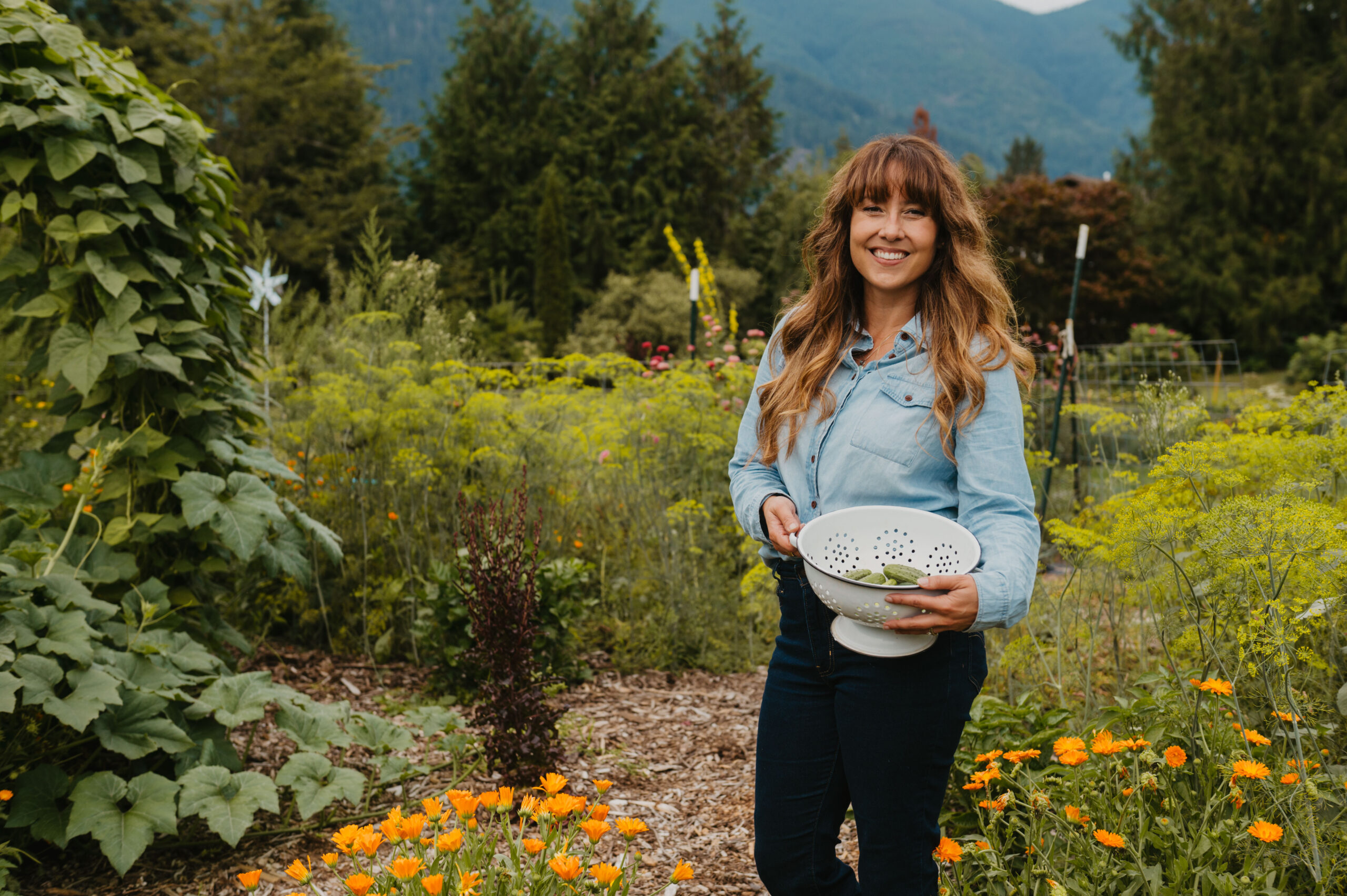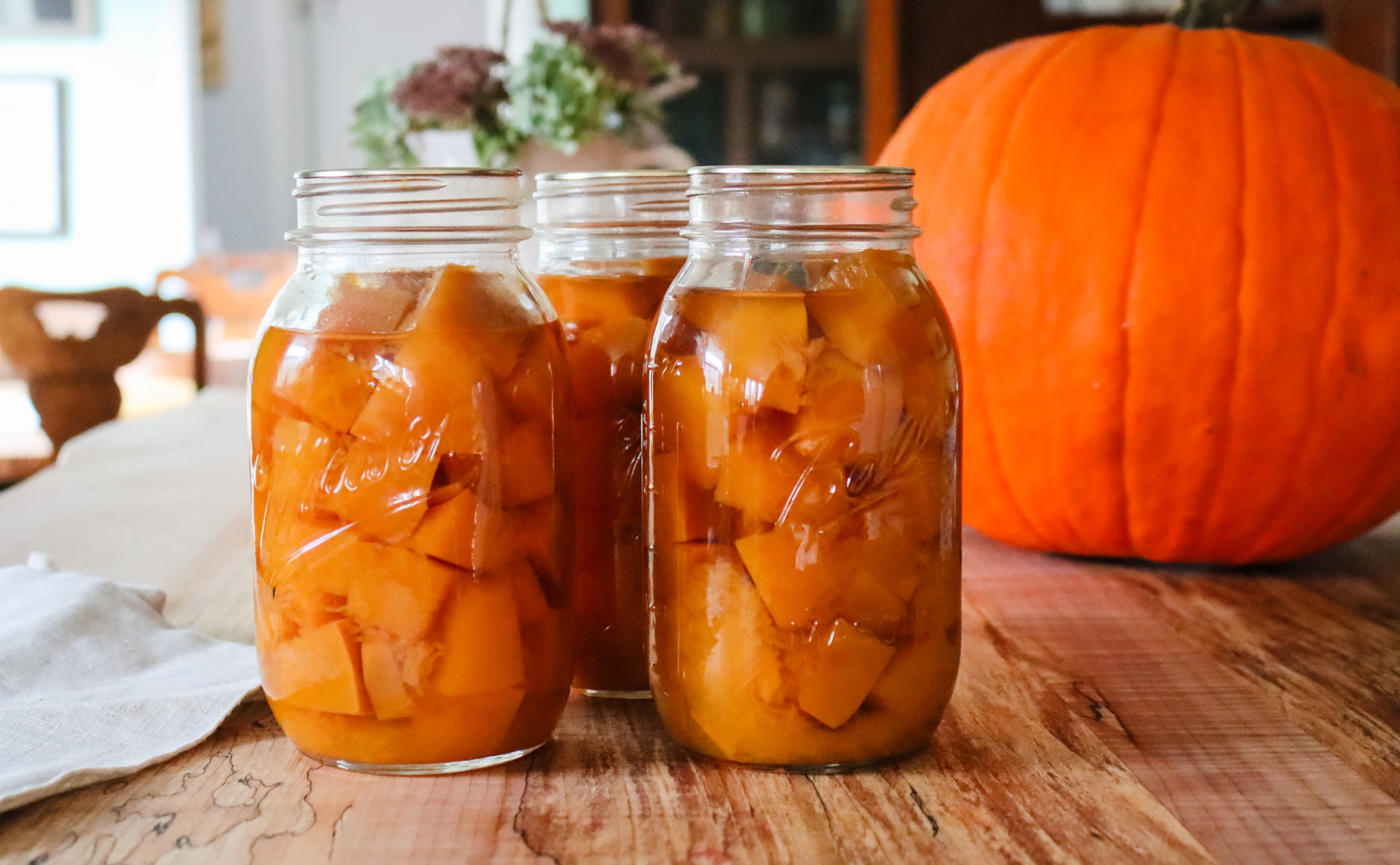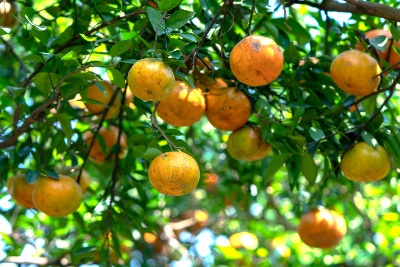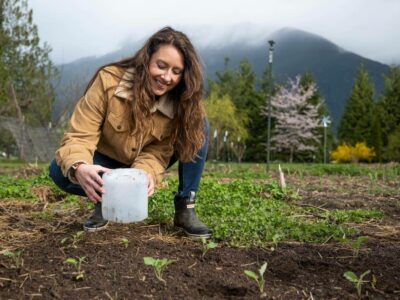These vegetable gardening tips are for beginners and seasoned gardeners alike. Use these tricks to grow the best garden you’ve ever had.

I’m often asked how much time it takes to grow a year’s worth of food. This time allotment can be different depending on several factors, but what remains consistent for everyone is when starting a new vegetable garden, there are a few gardening tips that can save you time and energy and get you to the good part… growing!
I’ve had several episodes of the Pioneering Today Podcast dedicated to this topic, and this blog post has been updated to incorporate my best tips for beginners and seasoned gardeners alike. You can listen to the full episodes of all podcast recordings below.
Episode #146 Time Saving Gardening Tips
Episode #210 Cheap Garden Ideas for Your Homestead that Make a Big Impact
Episode #335 Time-Saving Tips for New Gardens
Why Spend Less Time in the Garden

When it comes to growing your own food, I’m fully supportive of reaping the physical and mental benefits of gardening. However, if we aren’t intentional, gardening can quickly get out of control and start to feel burdensome.
I don’t think there’s anyone who has a whole lot of extra time on their hands or who wants to do more work than is necessary. Now, as homesteaders, we’re not afraid of work, but we don’t want to add any extra when we don’t have to.
For this reason, these vegetable gardening tips will help you balance your time in the garden so you can fully enjoy it while still securing the maximum harvest possible.
My Top Gardening Tips

If you are a beginner gardener, it might feel overwhelming to implement all of these gardening tips at once. Don’t take the “all or nothing” approach. Start small with one tip, and as you master it, you can move on to the next.
Even implementing one tip can still save you time in your garden this year!
Soil Quality
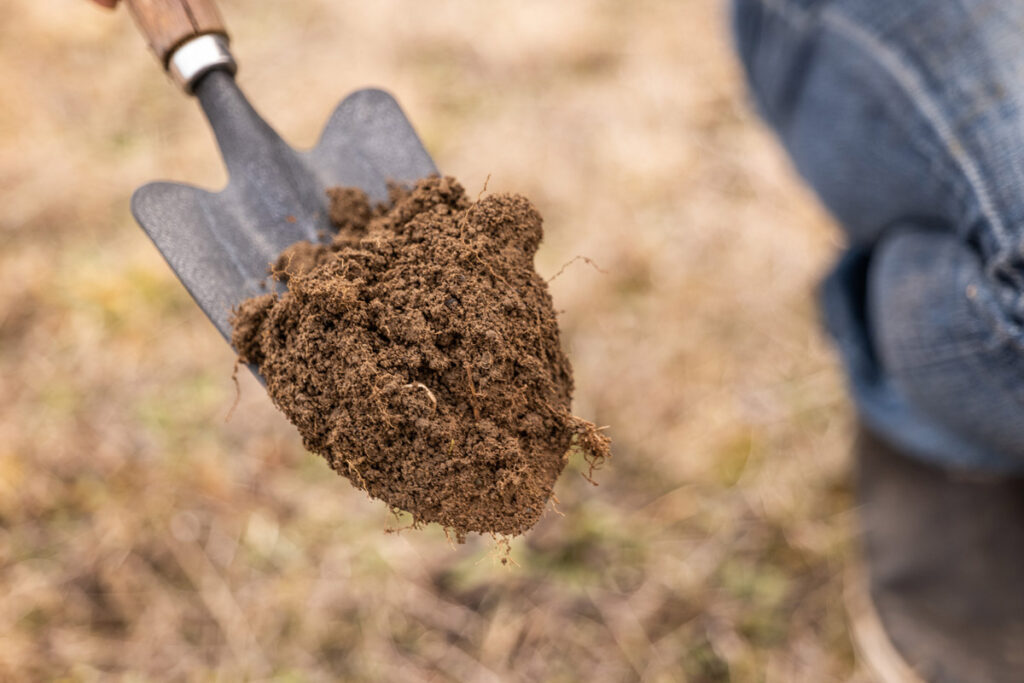
Before you start planting, it’s good to know what kind of soil you are working with to determine which types of gardens to plan. Learn how to test your soil and amend it here. It is so much easier to start with good, fertile soil than to try to fix it as you go.
Working with sandy or clay soil is better than working with rocky soil. Sandy and clay soils are relatively easy to fix with organic matter and compost. My top three ways to improve gardening soil are here.
Rocky soil is a bit more challenging to handle because the rocks don’t break down. Consequently, the rocks have to be manually removed with a shovel and a sifting screen. In more extreme cases, heavy machinery is needed.
Rather than fighting the rocks to prep an in-ground garden bed, it is easier to build your garden soil from the ground up using the no-till method, or choose one of the following contained gardening methods:
Planning
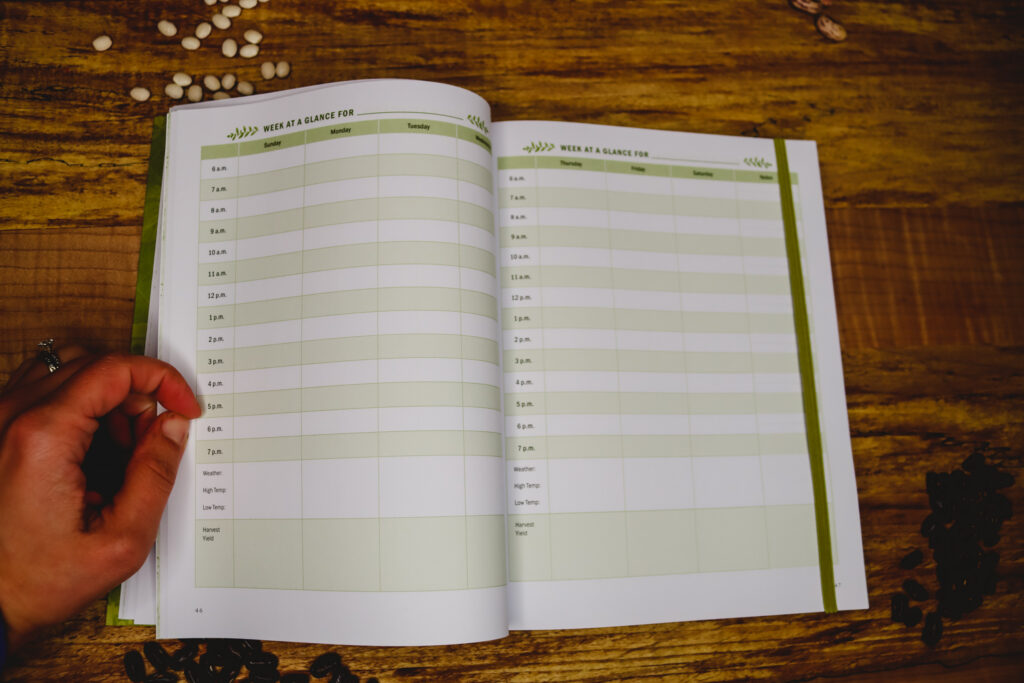
Once you know what kind of soil you have and the gardening method that is best for your circumstances, you need to map out a gardening plan. Even as a seasoned gardener, I take time to put together a garden plan every year.
I’m always excited to step back, evaluate what’s working and what isn’t, and make changes where necessary. Throughout the growing and harvesting season, my garden plan keeps me organized, saves time, and helps me to avoid garden overwhelm.
Planting
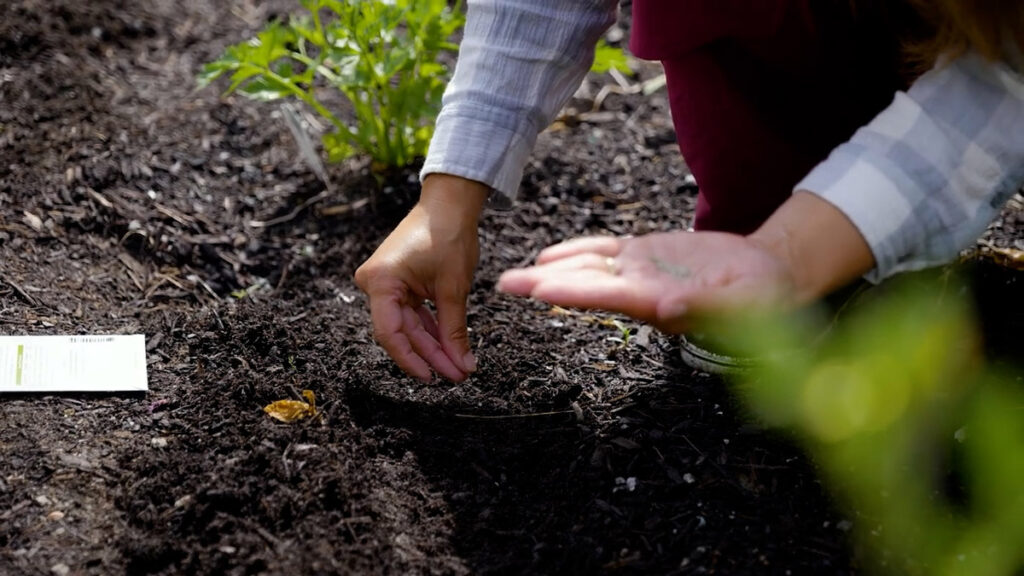
One area where you should invest more time up front to save time in the long run is to do whatever you can to ward off pests and disease at the time of planting.
You can begin by learning how to properly start seeds indoors and avoid common mistakes that lead to crop failures. The rest will come with experience and with a lot of trial and error, so if you’re a new gardener, expect to spend a bit more time dealing with some of these problems.
But if you take time to improve your soil (as mentioned above) and learn simple methods like garden crop rotation, companion planting, organic pest control, preventing early blight, and practicing good soil prep and garden hygiene in the fall, you will significantly impact the pest and disease problems that will arise.
Watering
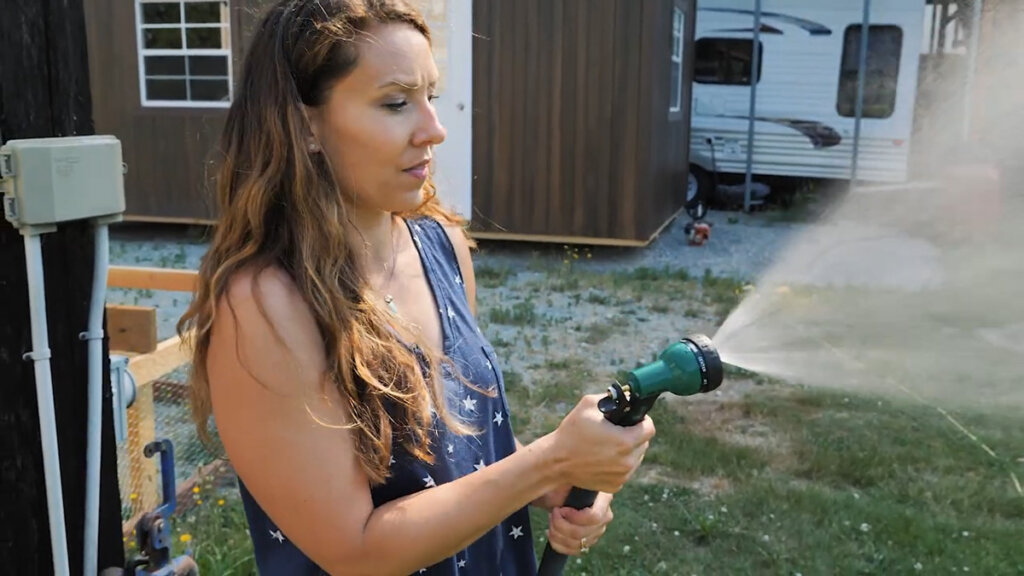
Watering is obviously really important to our plants, so we don’t want to forget about that. But first, let me say:
- Don’t water by hand, because that’s going to take the very most amount of time.
- Don’t be wasteful with water, even if you have an abundance.
Solution: Soaker hoses (I’ve had this exact hose for over five years). These are basically porous hoses that leak out just a small amount of water, kind of like drip irrigation. They weep the water out of your hose and into the ground.
Some benefits of soaker hoses are:
- You don’t have runoff because it’s not coming out in a hard spray.
- You’re not using as much water.
- When you place it at the base of a plant, the water is concentrated, so it goes straight to the roots.
- There is no overhead spray, which can really help with reducing blight and other fungal diseases.
When you use a soaker hose, you’re just watering the ground, so you’re not getting water and moisture all over the foliage, which is really what we want. Furthermore, it’s much better if you can do deep watering a couple of times a week rather than trying to water every day.
For more genius ways to keep your plants properly hydrated, check out these ways to drought-proof your garden.
Weeding

Weeding can suck up a whole lot of time, trying to keep that garden neat and tidy. There are a few options when you are trying to save time with your weeding chores.
- Mulch – With mulch, your goal is to smother the weeds. Place mulch between your garden rows or in between your planters. You can use wood chips for heavy mulching, or you can use sheet mulching.
- Tilling – This one can be kind of controversial, but I’m just putting all the options out there. We’re all going to pick what works best for us. When you’re planting in your annual vegetable garden, you want to leave enough space between the rows that you can fit a rototiller between them. Then you’ll just do a very light surface till in between the rows to get the weeds as they come up.
- Weeding Rotation Schedule – This works great with the kiddos. So every day, we can pick how much time we’re going to weed. Some days it may be 20 minutes to half an hour. Other days it might be 5 or 10 minutes. But doing a little bit every single day and rotating your way through the garden, you’re going to keep on top of it without needing to have 2-3 hour blocks. Again, this will depend on the size of your garden and how bad the weeds have gotten. Pro-Tip: It is easier to weed when they are small. So take a hoe when they’re just starting to come up and just scrape the surface. This allows you to disrupt their root system when they’re little.
- Use the Weeds – Some of the weeds, or what we consider weeds, are actually edible, and can even have medicinal properties. For instance, I allow dandelions to grow so that I can harvest them and use them to make dandelion salve. Please Note: If you’re ever going to eat anything or use it medicinally, you need to be 100% sure you know that plant is edible, and there is no doubt that it could be a look-alike. There are plants out there that are poisonous if we eat them.
If you’d like to learn more in-depth about winning the weed battle, check out my post on how to keep weeds out of the garden naturally.
Trellising

Growing vertically has many advantages, even if you have a lot of space. You can fit more stuff into a small amount of space, but some plants grow best on a trellis. A great example of this is growing pole beans.
The best time to install your trellising systems is at the time of planting. There are a couple of reasons for this.
- Time Saver – Anything you can do in batching will save you time. So think about it…you’re already out there, you’ve got all your planting stuff, you’re putting in your plants or seeds. It only takes an extra minute or two to put in the support system at the time of planting. Also, if you wait until it’s starting to send out its vines or its tendrils and it’s getting larger, then you’re taking another block of time and going back out and doing it.
- Root Saver – When you wait until young plants have matured, its roots go deeper, and you have a bigger root system. You run the risk of damaging and actually hurting the roots by putting in your support systems in your trellises when you’re pounding them into the ground.
In short, you’ll save yourself time and the health of your plant by putting in your trellises at the time of planting.
Perennials
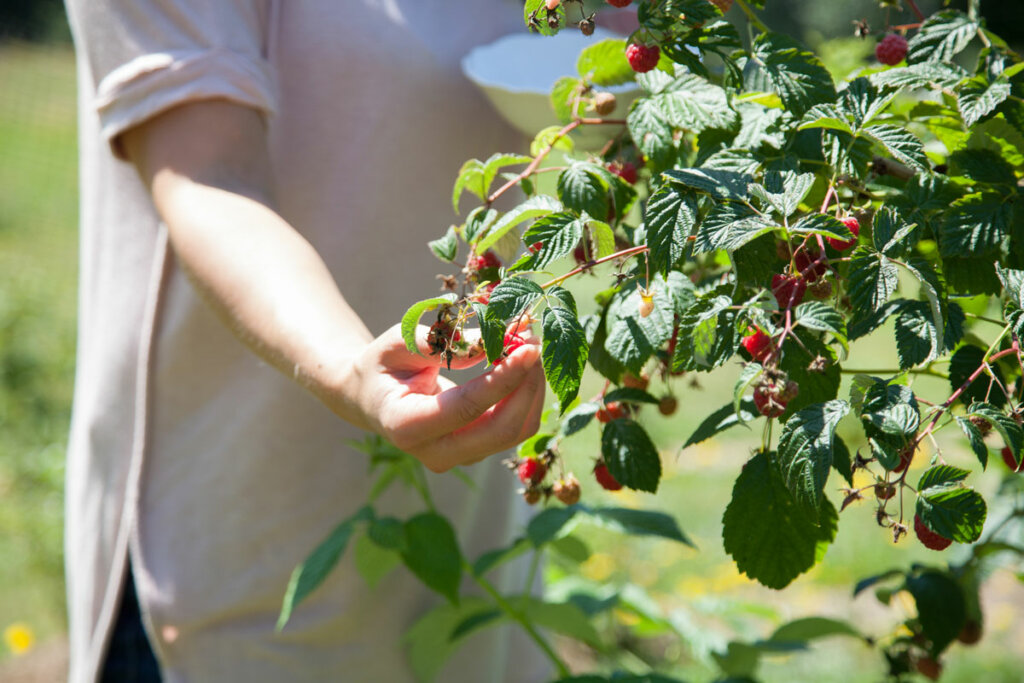
I love growing perennials because you plant them once, and they provide several growing seasons of harvests. When we put in a new asparagus bed and expanded our row of raspberry canes, the initial work definitely took some extra time to get them established.
However, for years to come, those plants required very little hands-on time.
Track and Record Data
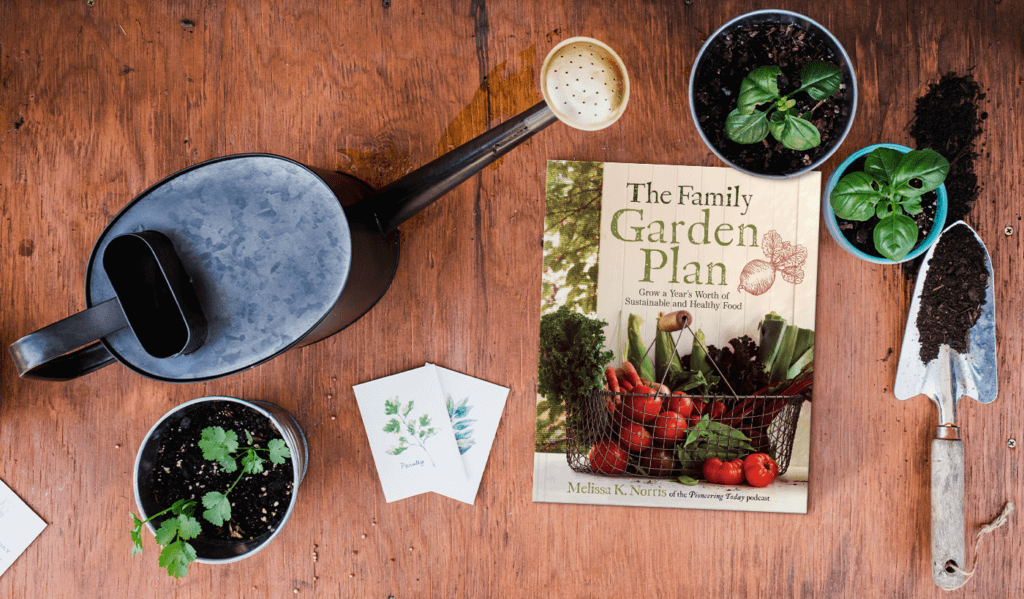
This last tip is critical to saving time in the garden. I am such a firm believer in tracking and recording my garden that I have developed The Family Garden Planner.
This workbook includes yearly, monthly, and weekly planning sheets, seed starting charts, monthly gardening tasks based on your climate, expert advice, and so much more!
This workbook can be used alone or as a companion to my book The Family Garden Plan. Order your copy today, and make sure to grab your exclusive bonuses!
Resources
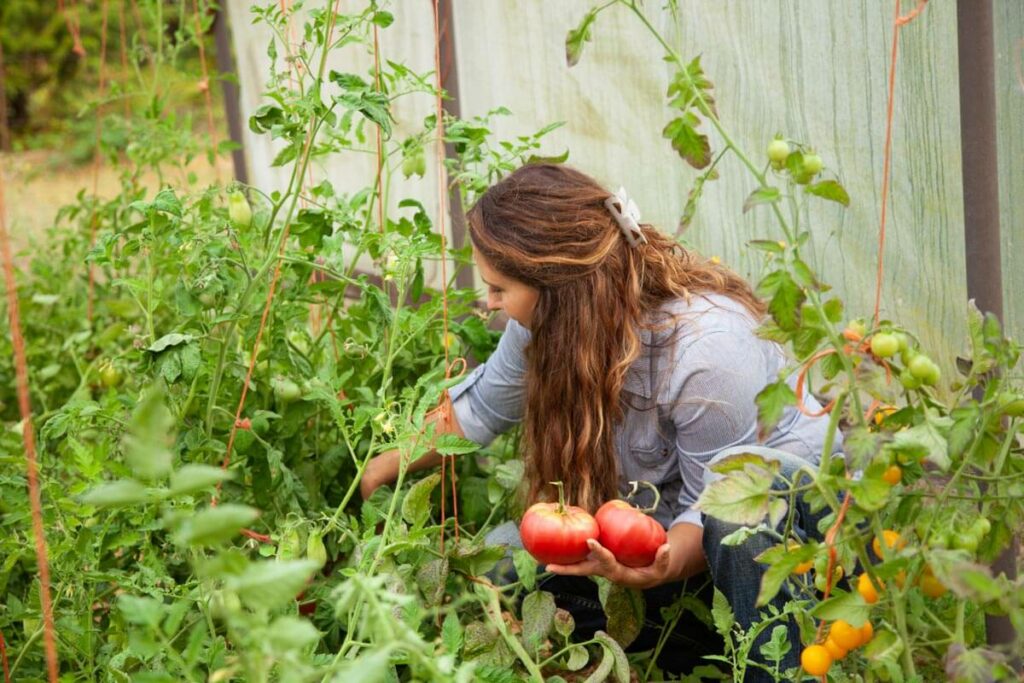
Episode #146
- Soaker Hoses – I’ve had this same hose for over 5 years now, and it’s still going strong.
- Episode #132 Perennial Plants to Increase Food Production with Less Time
- Episode #142 Edible & Medicinal Weeds in Your Backyard
- Homestead and Old-Fashioned Pioneer Living Facebook Group
- Verse of the Week – Joshua 11:20
Episode #210
Where to Find Amy
- Website – www.SowEdible.com
- Instagram – https://www.instagram.com/sowedible_podcast/
- Facebook – https://www.facebook.com/SowEdible/
- Podcast – https://podcasts.apple.com/us/podcast/sow-edible-podcast/id891143708
Episode #335
Verse of the Week – Ezekiel 18:31-32
